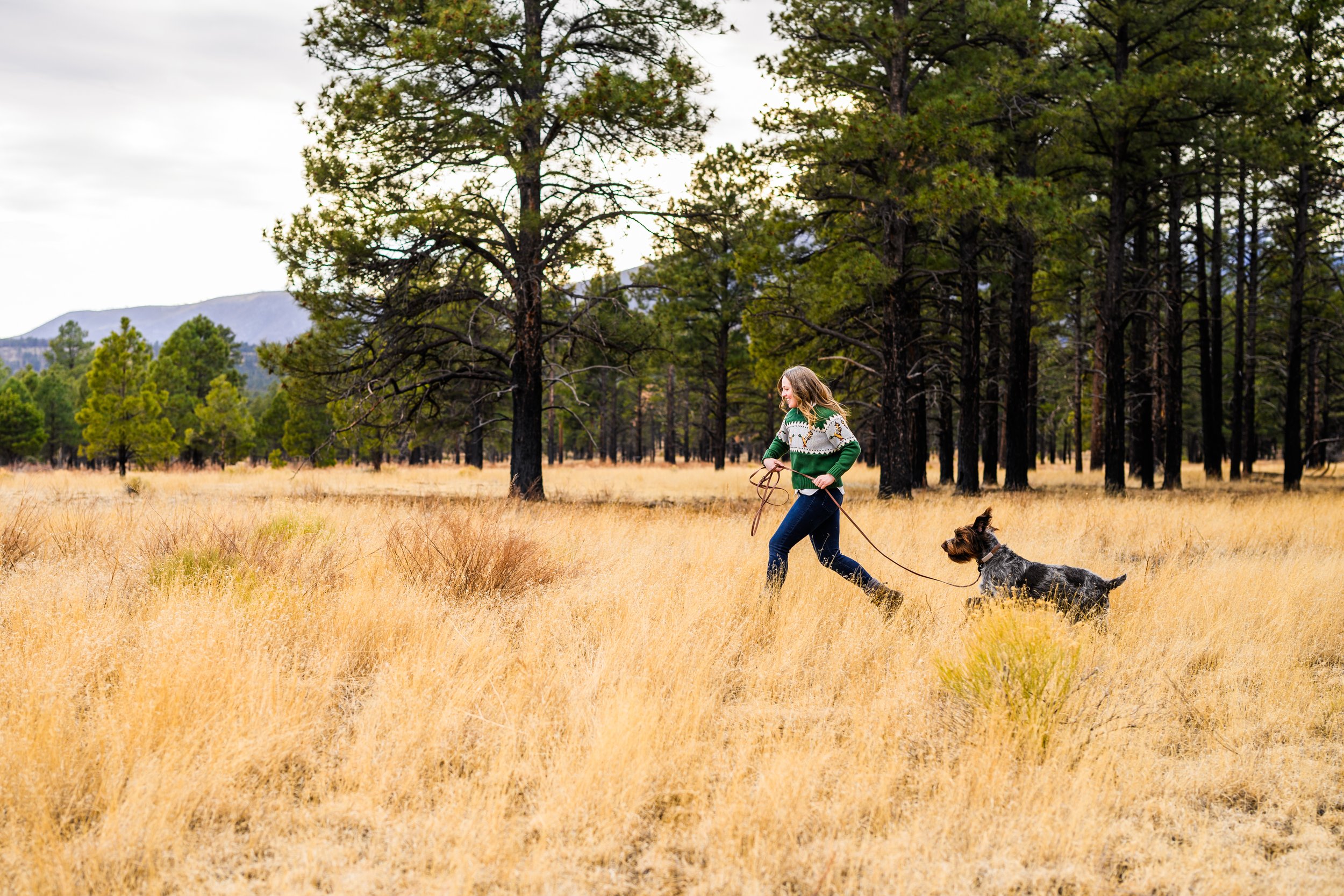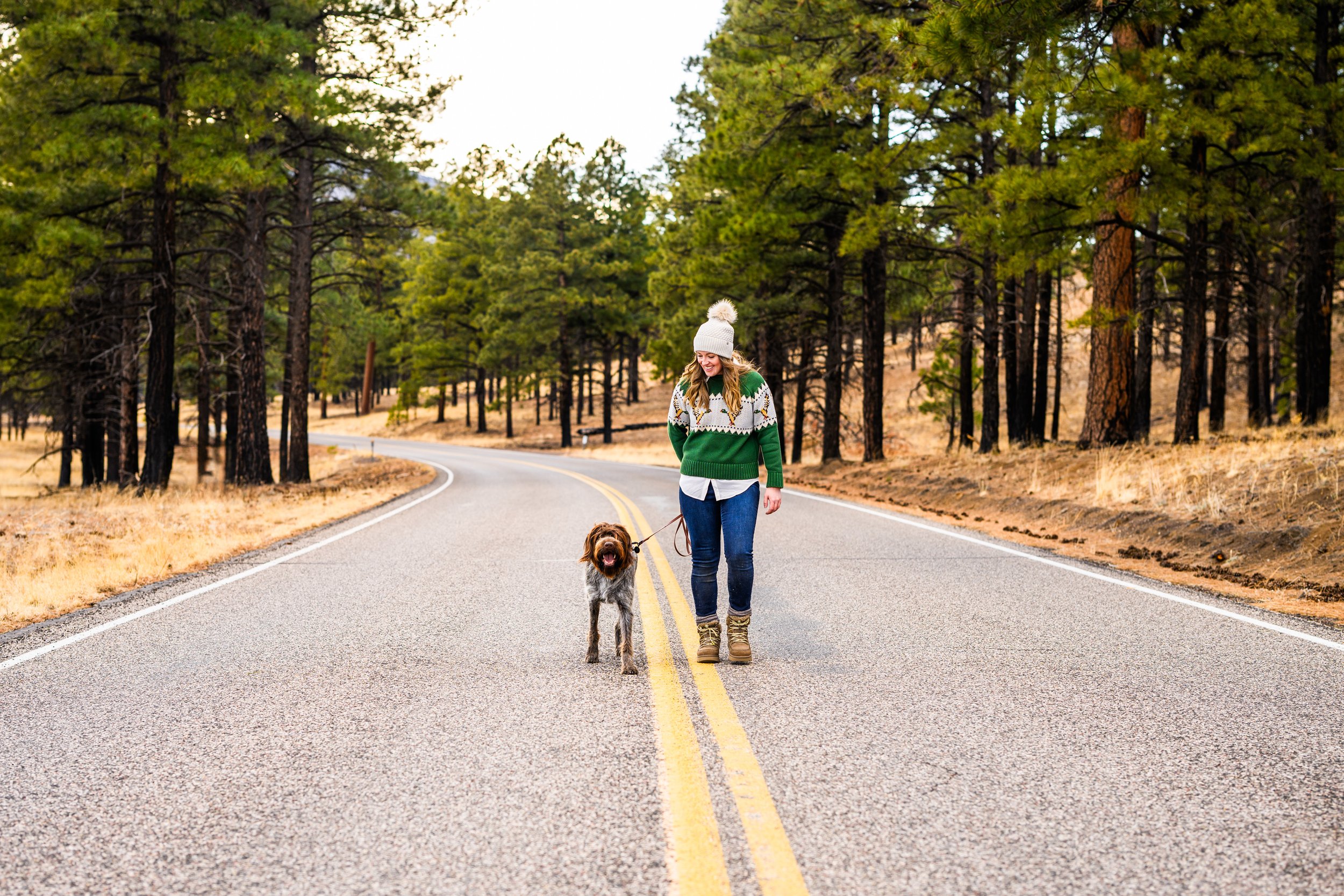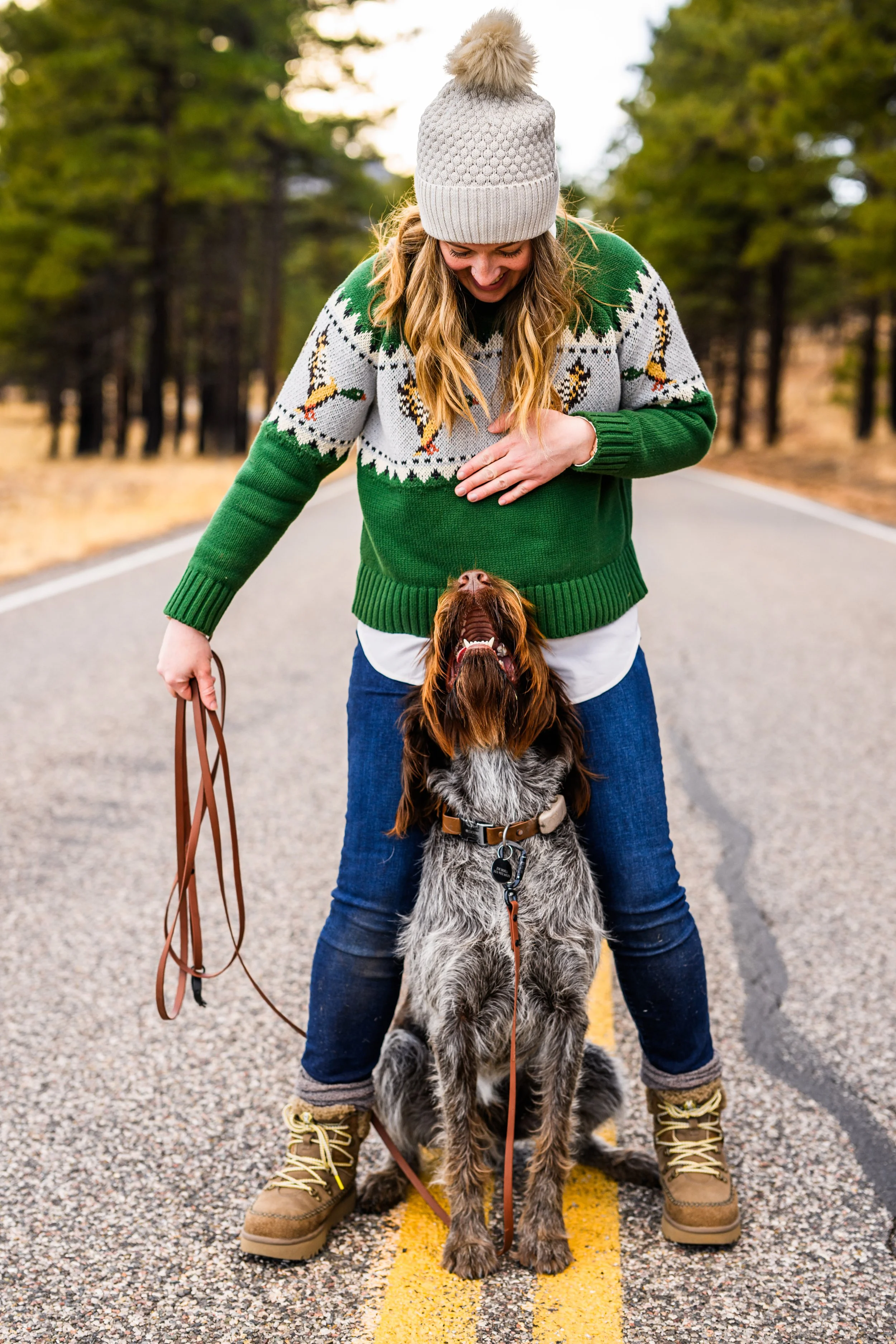
Positive Reinforcement Training
The Humane & Effective
Way to Train Your Dog
What is Positive Reinforcement Dog Training?
Positive Reinforcement Training is an umbrella term for training and behavioral therapy methods that do not use force, pain, discomfort, fear or intimidation. Though treats may be involved, Positive Reinforcement goes far, far beyond that. It is a comprehensive, scientific, ethical, and humane approach to training.
Positive Reinforcement is also referred to as Force-Free, R+, Science-Based, and Evidence-Based Training
Key Elements of
Positive Reinforcement
-
Learning Theory is the scientific framework that explains the way animals learn and why they behave the way they do. Developed by B.F. Skinner in 1938, Learning Theory looks at two main paths through which learning occurs—Classical and Operant Conditioning.
Classical conditioning is learning that takes place in relation to autonomic functions. Autonomic functions are processes that bodies performs unconsciously. Some of these include respiration, pupil dilation, sweating, digestion, and, most notably, emotional regulation. In Postitive Reinforcemnt Training, we use Classical Conditioning to change the way a dog feels about something. This comes in handy when we are working with fearful or aggressive animals. If we can change the way a dog feels about a trigger, then we can change the way they behave toward that trigger.
Operant Conditioning deals with conscious actions taken by individuals. This scientific principle explains that consequences drive conscious behavior. In other words, if the consequence of touching a stove is a painful sensation, an individual will choose not to touch a stove in the future. Similarly, if the consequence of going on a run is that you have more energy and an improved mood, you will be more likely to run in the future. In dog training, we use this principle to teach things like sit and stay.
-
Learning Theory isn’t “just a theory”. Both Operant and Classical Conditioning have been shown through decades of scientific research to hold true not just for humans and dogs, but for many, many other organisms. Pigeons have been trained to release bombs. Dolphins are trained to perform flips. Dogs are trained to steer airplanes. Even cockroaches can be trained to run mini agility courses.
Since the 1940’s, innumerable studies, have been conducted on the efficacy and ethics of dog training. With astonishing consistency, studies find that positive reinforcement training methods outcompete all other training methods. Not only does positive reinforcement offer stronger long-term results and a better relationship between dog and human, it also avoids the fallout from the use of aversive methods and tools. Research shows that using aversives results in decreased trust, avoidant behaviors, increased fearfulness and aggression, diminished capacity for learning, and regression in skills.
-
Going back to Learning Theory, let’s talk about the Four Quadrants of Operant Conditioning. In Operant Conditioning we have Rewards and Punishment. Scientifically speaking, a reward is anything that increases the likelihood of a behavior, and Punishment is anything that decreases the likelihood of a behavior. Rewards and Punishments can be Positive or Negative. Simply put, Positive means adding something, and Negative means taking something away. With that information, the Four Quadrants are as follows.
Positive Reinforcement means adding something that increases the likelihood of a behavior. The reason this works is that whatever you are adding is pleasant enough that they will want to repeat the action that created that reward. Feeding a dog a treat for sitting is positive reinforcement. Releasing a dog to greet someone at the door for staying behind the threshold is positive reinforcement.
Positive Punishment means adding something that decreases the likelihood of a behavior. The reason this works is that whatever you are adding is uncomfortable enough to the dog that they will suppress their behavior. If it wasn’t uncomfortable, it wouldn’t work. Delivering a shock when a dog barks to get it to stop barking is positive punishment. Kneeing a dog in the chest when they jump to get them to stop jumping is positive punishment.
Negative Reinforcement is removing something in order to increase the likelihood of a behavior. This works because the relief a dog feels from the removal of an averisve stimulus is so great that they are likely to repeat the action that brought on the sense of relief. Using a prong collar to get a dog to stop pulling is negative reinforcement. When the dog pulls on the leash, the prong pokes their neck, but when they stop pulling, the poking sensation ends. Another example of negative reinforcement is pushing a dog’s butt toward the ground until they sit.
Negative Punishment is removing something in order to decrease the likelihood of a behavior. This works because the dog realizes that the behavior they have been performing is no longer getting them what they want. Turning your body away from a dog and ignoring them when they jump on you for attention is negative punishment. Stopping a game of tug when the dog puts its teeth on your hand is negative punishment.
Despite its name, Positive Reinforcement Training uses both Positive Reinforcement and Negative Punishment. All this means is that we reward behaviors we like and we take away rewards when they are reinforcing behaviors we don’t like. If this doesn’t sound like enough to deal with a severe behavioral issue, you are correct. And that is why we do not use operant conditioning as a primary tool in behavior modification. For that we need to use Classical Conditioning in conjunction with other methods.
-
Under the umbrella of Classical Conditioning (see Learning Theory), Counter Conditioning is, in essence, the process by which we change the negative associations a dog has about something, as well as the negative emotions that come along with those associations. This is accomplished by pairing a positive stimulus with the dog’s trigger while the dog is under threshold.
A positive stimulus is something the dog finds pleasant, like a treat or a game. A trigger is the thing that is causing the dog to have a reaction like barking, lunging, cowering, or biting. The trigger can be anything—a dog, a person, a sound, a smell, a place. Threshold is the line at which the intensity of the trigger is too high, which will cause the dog to react. Threshold can be affected by distance, volume, motion, familiarity, environment, and more.
Along with management, enrichment, coping mechanisms, pattern games, social support, and a Learner Centered Training approach to communication, Counter Conditioning is an important aspect of a successful behavior modification plan.
This approach asks us to look at the behavior as a symptom, and to address the underlying cause of the behavior, rather than simply suppress it.
-
Many people have the misguided impression that Positive Reinforcement is “permissive”. On the contrary, Positive Reinforcement Trainers are not soft, and we do not let our dogs just do whatever they want whenever they want. This perception is due to the fact that we do not “punish” or “correct” our dogs. Setting aside the fallout that can occur, telling a dog “no, don’t do that” is a very ineffective way to get what you want. This is because undesirable behaviors always arise out of an attempt to fulfill an unmet need. Punishing a dog for trying to meet a need is unethical, and it also doesn’t make the need go away. A dog will attempt to fulfill their needs the easiest and fastest way available to them. Telling them no repeatedly and punishing those attempts will lead either to more intense displays or complete shutdown, known as learned apathy, which could accurately also be labeled depression.
It is much better for you and the dog, if you simply tell them what you DO want, not what you don’t. Give them a way to meet their need that is appropriate, and you have fixed the problem without causing emotional damage.
For example, if a dog wants to get on the couch to cuddle, we could ask them instead to lay on a bed near the couch and receive cuddles there. Most of the time, we are focused on what we don’t want the dog to do. All we have to do is ask “what do we want them to do instead?”
-
A hallmark of Positive Reinforcement Training is a learner-centered approach. In order to understand why a behavior is happening, we must put ourselves in the dogs, well, paws. This is important, not just because we need to have intimate knowledge of the species and the particular breed we are working with, but because each learner is an individual. Dogs, like humans, have strengths and weaknesses. Knowing your learner will make you a more effective team.
-
Many people feel that their dog is too—you fill in the blank—for Positive Reinforcement to be effective. Too aggressive. Too stubborn. Too strong. Too high drive. Too energetic. The truth is, there is no dog that is too anything for Positive Reinforcement.
One reason some people feel this way is that they have either hired a Positive Trainer or they’ve tried it themselves, and they did not get the results they were hoping for. While this does happen, the reason the training fails is due to human error, not the method. This is why we desperately need legally required certification in this field. When unskilled trainers or inexperience guardians attempt to use Positive Reinforcement on their own, it is easy to make mistakes. Just like veterinarians, therapists, and professors, certified professional dog trainers, spend years educating ourselves. And our education never ends. This isn’t something you can just pick up and decide to do on a Saturday afternoon, it is a highly skilled profession. Using Positive Reinforcement methods incorrectly can even make things worse in some cases. Most of these mistakes are made by well meaning, caring people, and harm is not intended. However, it is important to understand that as guardians, we need to do research to find a trainer that has the appropriate experience before we throw away the entire methodology of Positive Reinforcement.
Another reason that people think it won’t work is that they feel their dog needs corrections or an aversive tool in order to stop a very extreme, unwanted and/or dangerous behavior, or to keep the dog safe. I deeply, deeply understand this. Having an extremely behaviorally challenging dog myself, I empathize with the feelings of desperation and hopelessness that often accompany these situations. We all just want to do what is best for our dog and keep them safe from harm. The truth is, regardless of whether your dog likes to bolt out the front door, get lost in the woods, chase prey, bite people, fight dogs, or lunge and bark at the neighbors on a walk, Positive Reinforcement is the most effective and safest choice. Period.
Decades of research have shown that it is particularly important that we use only Positive Reinforcement when it comes to fear and aggression cases. The risk of fallout behavior and increased aggression is far too high for the short term benefits to be worth it. After all, what good is it if we can stop a dog growling when you take their bone if they skip right to biting next time? What good is it if we can get a dog to come back to you off-leash if they only do it when they have their E-collar on? What good is it if your dog doesn’t bark at the fence if they won’t go into the backyard because they now associate it with a shock? Their are always unforeseen and unpredictable consequences of using aversive methods, regardless of whether you have a skilled trainer or not. With Positive Reinforcement, there are no risks of fallout—behaviorally, emotionally, or medically.
-
Decades of research shows that when we use aversive training with dogs that are displaying aggressive behaviors, there is a high likelihood of those behaviors returning with more intensity in the future. We also see the increased likelihood that novel aggressive behaviors will arise. This can even happen with dogs that previously showed no aggressive behaviors.
One common example of this is with resource guarding behaviors. Resource guarding is a set of behaviors that are used as communication by the dog to let another animal know they do not want to share. Let’s say a dog is growling whenever a human comes near his toy. The human views the growling as undesirable and unacceptable, and chooses to smack the dog’s muzzle and say no whenever the dog growls. The dog learns that their communication about their discomfort will be ignored and punished, so they stop growling to communicate. The problem is that the dog’s underlying emotion has not changed. The likelihood that the the dog will move straight to snapping or biting in the future is now more likely.
This can happen with dogs that aren’t displaying aggressive behaviors as well. Correcting a dog with a leash pop whenever a dog jumps up on someone can cause the dog to form a negative association with humans. The dog may learn whenever they try to interact with people, they get yanked by the neck, therefore they will learn to be fearful of people, which can in turn cause them to display aggressive behaviors.
-
Escape and avoidance behaviors are extremely common with aversive training. These happen because the dog has made the association between a behavior and a punishment, and then seeks to avoid the punishment.
A common example is in potty training. Many trainers will tell you to punish the dog for having an accident. Put their face in it and say “no”. The most common result of this is that the dog learns not to be seen going to the bathroom or to do it somewhere hidden. They are afraid of the human, but have not learned not to go to the bathroom inside.
Another example I see frequently is with E-collars for recall. The dog learns that they must come when they have the collar on or else they will receive a shock. However, when the collar comes off, the dog will not come, and when you go to try to put the collar on them, they will run away from you. This is the opposite of an effective recall cue.
-
This one is the saddest. Learned Helplessness occurs when all attempts that a dog makes to meet a need are met with punishment. Some dogs when faced with punishment will choose this instead of aggression, others will choose it after aggression has also been punished.
If a dog is always corrected for attempting to sniff on a walk (a necessary and very natural behavior), the dog may give up and stop trying at all. This is not because the dog has learned to walk nicely on a leash, it is because they have given up hope and they fear punishment. This emotional state in dogs looks very similar to what we see in humans with depression.
The Fallout of
Aversive Training




